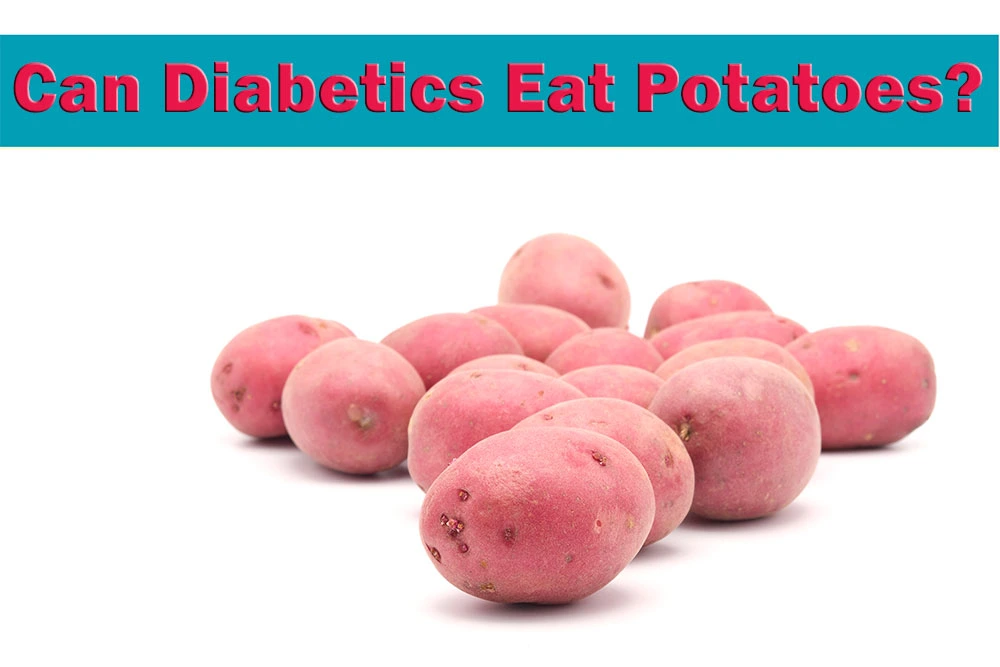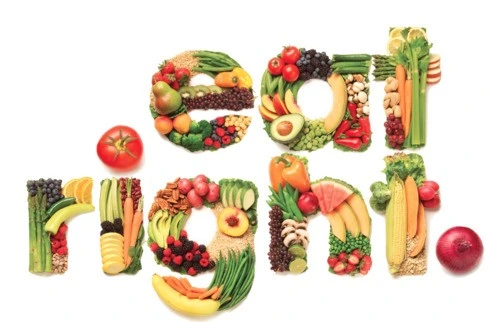Last updated on November 21st, 2022
 Even though potato is a starchy veggie, a diabetic might still enjoy it as part of a beneficial diet. Diabetics require being aware of carb consumption at each meal. When an individual consumes something, their body converts the carbs and sugars in the food into a simple sugar named glucose. Glucose goes into the bloodstream and enhances the levels of glucose in the blood. An individual who does not have diabetes would produce and utilize insulin efficiently. Insulin, being a hormone permits the sugar to go inside the cells to utilize for energy. This indicates that sugar leaves the bloodstream. On the other hand, diabetics are found incapable of producing or using insulin in an effective manner. This implies that sugar cannot enter the cells as well as stays in the blood, and this enhances blood sugar levels. Because of this, it is important that diabetics must monitor their carb intake. Read this blog to know about diabetes and potatoes.
Even though potato is a starchy veggie, a diabetic might still enjoy it as part of a beneficial diet. Diabetics require being aware of carb consumption at each meal. When an individual consumes something, their body converts the carbs and sugars in the food into a simple sugar named glucose. Glucose goes into the bloodstream and enhances the levels of glucose in the blood. An individual who does not have diabetes would produce and utilize insulin efficiently. Insulin, being a hormone permits the sugar to go inside the cells to utilize for energy. This indicates that sugar leaves the bloodstream. On the other hand, diabetics are found incapable of producing or using insulin in an effective manner. This implies that sugar cannot enter the cells as well as stays in the blood, and this enhances blood sugar levels. Because of this, it is important that diabetics must monitor their carb intake. Read this blog to know about diabetes and potatoes.
It is a starchy vegetable consisting of carbs that are found to increase an individual’s glucose levels. In this article, the examination will be done on whether diabetics can consume potatoes or not. You can read about potato sugar content, is potato good for diabetes, and how to cook potatoes for diabetics?
When a person is watching his or her blood glucose closely, carbohydrate count does matter. Carbs get broken down into glucose in a person’s digestive system. This glucose enters the bloodstream and raises the levels of blood sugar.
It constitute 30% of the veggies the average adult population consumes per year. The skin of potatoes makes them rich in fiber, and low in calories. It contains vital nutrients such as vitamins B6 and C, as well as potassium. Also, the vegetable is rich in starch, which is again a carb. However, it is classified as a complex “healthy” carb. These carbs are easy to digest by a person’s body as well as faster to digest as compared to other types of complex carbs. These broken-down carbohydrates flood the person’s bloodstream with glucose. And this results in raised blood glucose rapidly.
In individuals having diabetes, this process is not efficient. Rather than glucose expelling out the blood and into the body cells, it remains circulating in the blood and keeps the glucose levels high in the blood for longer. Thus, consuming high-carbohydrate foods and/or large portions might be harmful to diabetics.
Poorly managed diabetes is associated with medical conditions such as kidney damage, heart failure, stroke, nerve damage, vision loss, and amputation. Thus, it’s generally suggested that diabetics should limit their digestible carb consumption. This might vary from a very low carbohydrate consumption of 20–50 grams every day to a moderate limit of 100–150 grams each day. The exact quantity differs based upon the person’s dietary preferences as well as medical goals.
Also Read: Is pineapple beneficial for people with diabetes?
Potatoes and Diabetes
The ADA proposes the consumption of starchy veggies like potatoes, as part of a nourishing diet. Starch is a complex carb that takes a long time to get broken down in comparison to simple sugars.
It is a common delusion that diabetics must not have potatoes or other starchy foods as they are expected to have a high glycaemic index (GI). GI is quite a helpful system in which foods are ranked as per their potential to spike blood glucose levels. Food items that have a high GI increase the blood glucose rapidly as compared to those having a low GI.
The truth about potatoes
According to the ADA:
- low-GI foods have a GI of 55 or less
- medium-GI foods have a GI of 56 to 69
- high-GI foods have a GI of 70 or more
Consumption of foods having a low or medium GI considerably aids a person in managing his or her sugar levels. However, few varieties of potato consist of a high GI value, other factors help in balancing this out.
Yet, GI is not the only signal of the impact of food on blood glucose. Glycaemic load (GL) also established the quantity of sugar entering the bloodstream. While diabetics must remain watchful of their consumption of high-GI foods, managing portion size, as well as their preparation method, greatly assist in lowering their impact on blood glucose levels.
While opting for high-GI food, the ADA suggests a combination of low-GI food with it to balance out a particular diet. ADA also states that portion size is very important to enjoy starchy foods as part of a wholesome meal plan.
Another significant point to remember is the cooking method. Deep or shallow frying potatoes in various oils or fats, including animal fats, might enhance their saturated as well as trans-fat content. This can also enhance the risk of cardiovascular problems, particularly in diabetics who already have an augmented risk of heart disorders.
In addition, fats comprise calories. Individuals who manage their body weight to lower the impact of type 2 diabetes might want to cook potatoes in a way that limits the number of calories and fat. To decrease body weight, individuals should make a practice burning more calories than they eat.
The best way by which potatoes for diabetics can be prepared is to boil or steam them. Both boiled as well as steamed potatoes contain a rich number of vitamins, minerals, and fiber but quite low amounts of fat, sugar, and salt.
Summary
Are potatoes diabetic friendly? Like any other carbohydrate-consisting food product, potatoes are found to enhance the levels of glucose in the blood. When a potato is consumed, the body breaks down the carbs into simple sugars that enter the bloodstream. This results in a spike in blood glucose levels. Then the hormone insulin gets released into the blood. Insulin helps in transporting the glucose into the body cells in order that they might be utilized for energy.

Some Important Considerations While Eating Potatoes With Diabetes
- Potatoes when eaten with skin are more healthful.
- Diabetics must be aware of the portions of potato they eat.
- It is always a good idea to consume potatoes as part of a balanced, healthful meal.
- Can type 2 diabetics eat potatoes? Consuming potatoes together with low-GI foods that deliver fiber, lean protein, and healthful fats may aid in balancing the nutritional benefits of a diet.
- Consuming high- fiber foods may aid an individual in moderating the blood glucose levels and enhancing their feeling of fullness after having a diet. Low-GI foods can be other non-starchy veggies.
- Diabetics must avoid heavy toppings that include calories in their meals.
Also Read: Top 10 Home Remedies For Diabetes
Best Potatoes for Diabetics
- Sweet potato is one of the best kinds for diabetics, as they have a low-GI value and consist of higher fiber content as compared to the white potato. Sweet potato is also found to be a good source of calcium and vitamin A.
- Carisma potatoes, varieties of white potato, are another lower-GI choice.
- The russet potato is high-GI; thus, diabetics must limit the amount they consume.
These are some of the healthiest potatoes for diabetics and must-try options.
Also Read: Normal Diabetes Level
Different Ways to Eat Potatoes
Both these factors affect the GI and the nutritional content of potatoes. For example, whole potatoes are found to have a lower GI as compared to mashed or diced potatoes.
Are mashed potatoes ok for diabetics? Letting the potatoes cool to some extent before consumption may also be healthy. Cooking a potato increases the digestive ability of the starch, which increases the GI value. After cooling, the digestive ability of a potato again reduces, and this might reduce the GI value.
Thus, the most nourishing way to cook potatoes is to steam, boil, or microwave them without including other components. Preparation of potatoes this way would make sure that they become very low in fat, sugar, and salt.
Keeping the potato skin on may offer added fibers. Up to 50% of the phenolic compounds present in potatoes are found in the skin and attached flesh. Phenolic compounds comprise favorable antioxidant properties useful for health.
Also Read: Insulin to Carb Ratios
Diet Tips For Diabetics
It’s important to include a serving of non-starchy veggies to potatoes.
Meal planning is a significant tool for diabetics, as it helps them in optimizing the meal timings as well as the serving sizes for every meal. A physician, dietitian, or diabetes counselor delivers certain dietary recommendations and helps a person with meal planning.
People having diabetes must consume high amounts of non-starchy veggies and fill half of their plates with nutrient-rich veggies like cauliflower, carrot, tomato, broccoli, peppers, spinach, and other green leafy veggies.
Also Read: Diet Plan For Diabetes Patient India
Starchy and lean protein alternatives must comprise 1/4th of the plate. Cut down too much fat from the cuts of meat to reduce their saturated fat content.
Also, carb counting is a useful tool for managing diabetes. Counting the total carb content of foods as well as meals can help in determining how a particular food affects an individual’s blood glucose levels. A physician or dietitian managing an individual’s sugar levels can suggest an individualized daily carb count.
Summary
Whether fried, baked, boiled, mashed, or steamed, it is one of the most well-accepted foods in the meal plan. Consumption of non-starchy foods together with moderate portions of whole potatoes may help in balancing out their GI. It can be cooked by boiling or steaming with no extra constituents, this makes sure they are low in fat, salt, and sugar. Potatoes are rich in potassium and B vitamins, as well as their skin contains a modest amount of fiber. Diabetics may consume this veggie in several forms, but it’s vital to recognize the effect they have on the glucose levels and what is the suitable portion size to eat. It raise the blood sugar levels as carbohydrates get broken down into simple sugars and then they go into the bloodstream. In diabetics, the sugar does not get cleared properly, resulting in higher blood glucose levels and likely health complications. Eating potatoes in excess may present issues in blood sugar control for people having diabetics.
FAQs:
Is it good to consume potatoes in their raw form?
Will potato make me fat?
Is potato bad for kidneys?
What is the suggested quantity of a potato for a diabetic?
References:
- https://www.medicalnewstoday.com/articles/323449#summary
- https://www.healthline.com/nutrition/potatoes-and-diabetes#glycemic-index
Last Updated on by Dr. Damanjit Duggal
Disclaimer
This site provides educational content; however, it is not a substitute for professional medical guidance. Readers should consult their healthcare professional for personalised guidance. We work hard to provide accurate and helpful information. Your well-being is important to us, and we value your feedback. To learn more, visit our editorial policy page for details on our content guidelines and the content creation process.

 English
English












